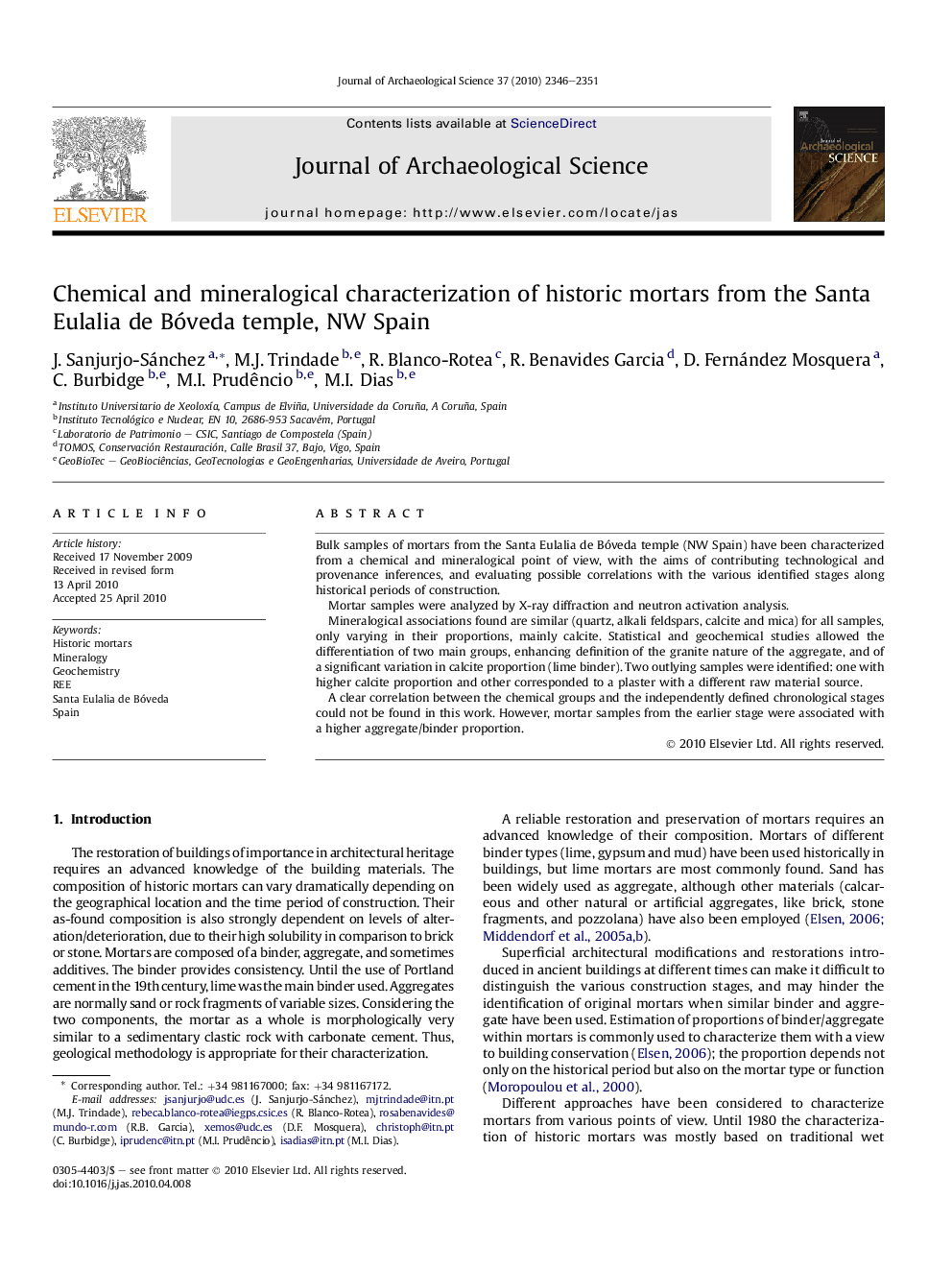| Article ID | Journal | Published Year | Pages | File Type |
|---|---|---|---|---|
| 1036653 | Journal of Archaeological Science | 2010 | 6 Pages |
Bulk samples of mortars from the Santa Eulalia de Bóveda temple (NW Spain) have been characterized from a chemical and mineralogical point of view, with the aims of contributing technological and provenance inferences, and evaluating possible correlations with the various identified stages along historical periods of construction.Mortar samples were analyzed by X-ray diffraction and neutron activation analysis.Mineralogical associations found are similar (quartz, alkali feldspars, calcite and mica) for all samples, only varying in their proportions, mainly calcite. Statistical and geochemical studies allowed the differentiation of two main groups, enhancing definition of the granite nature of the aggregate, and of a significant variation in calcite proportion (lime binder). Two outlying samples were identified: one with higher calcite proportion and other corresponded to a plaster with a different raw material source.A clear correlation between the chemical groups and the independently defined chronological stages could not be found in this work. However, mortar samples from the earlier stage were associated with a higher aggregate/binder proportion.
